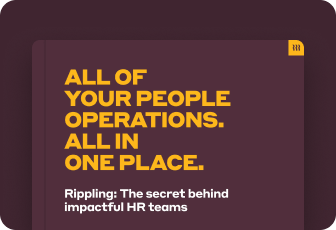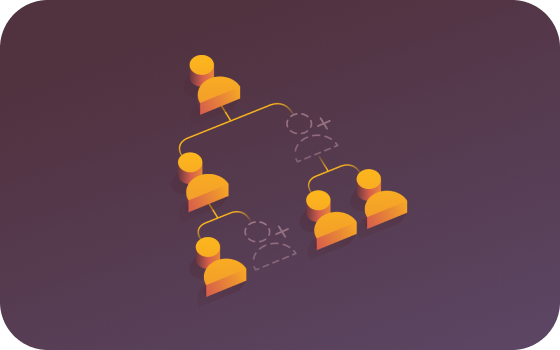Managing a multigenerational workforce: Benefits, challenges & strategies
In this article
Managing a company’s employees can be complex—especially when you’re dealing with several different generations in one workplace. From the Silent Generation all the way to Gen Zers, each generation brings its own perspectives, work styles, and communication preferences. Generational differences can affect everything from how people handle feedback to how they approach work life balance.
In this article, we’ll explore why understanding workplace generational differences is crucial for leaders—and dive into the benefits and challenges of having a multigenerational team and practical strategies for leading a multigenerational workforce. By the end, you’ll have a clearer view of how to foster an inclusive and productive work environment that meets the needs of all age groups.
What is a multigenerational workforce?
A multigenerational workforce is one in which multiple generations coexist in the same organization—often spanning from the Silent Generation (those born between 1928 and 1945) to Gen Zers (those born from 1997 onward). With people aged from their early 20s to their 70s or beyond sharing the same work environments, employers can encounter a rich array of skills, talents, and perspectives.
Today, it’s not uncommon to see four—or even five—different generations represented in one workplace. The breadth of ages can spark innovation, encourage mentoring, and promote diversity, but it also creates potential multigenerational workforce challenges, such as communication gaps or conflicting assumptions about work styles.
Recognizing the blend of age groups that exists in the workforce helps employers build better leadership approaches, making sure everyone feels respected and valued.
Generations in the workplace
Let’s look at the different generations in the workplace today, plus each one’s traits, career stages, and retirement timelines.
Silent Generation → 1928-1945
Often in late-career or post-retirement roles
Many born during wartime or economic struggles
Tend to value traditional hierarchy and face to face interactions
May prioritize loyalty and stability in their work style
Baby Boomers → 1946-1964
Commonly referred to simply as “boomers”
Born in the post-war era with a significant population spike
Often approaching or delaying retirement
May have a strong work ethic
Tend to value loyalty and face to face communication
Generation X → 1965-1980
Also called “Gen Xers” or “latchkey kids”
Born amid a time of social change and upheaval
Frequently stepping into mid-to-senior leadership positions
Currently balancing family responsibilities, work life balance, and career advancement
Generation Y (Millennials) → 1981-1996
Most often referred to as “millennials”
Born in a rapidly evolving digital era
Prioritize work life balance, flexible work, and purpose-driven roles
Known for a collaborative work style and comfort with technology
Generation Z → 1997-2012
Often referred to as “Gen Zers”
Born fully immersed in the internet age; many are digital natives
Early in their careers, focused on quick skills growth
Tend to value diversity, immediate feedback, and flexible work environments
Key differences between generations in the workplace
Understanding workplace generational differences can help managers and team members appreciate the diverse perspectives in a multigenerational setting. However, it’s equally important to recognize that no one fits a perfect mold—and that stereotypes about boomers, millennials, Gen Xers, Gen Zers, or the Silent Generation can cause managers to overlook employees’ individual nuances.
When employers focus on broad patterns of behavior without making sweeping assumptions, they can more effectively manage their workforce and foster harmony among different generations in the workplace. With that said, below are some key areas where employees from different generations might differ in important ways:
1. Core beliefs and priorities
One key area of difference involves core beliefs and priorities.
While many boomers may have been born into a context where career longevity and loyalty were paramount, some Gen Xers—who grew up in an era of more rapid economic shifts—could place more value on independence and professional stability.
Millennials and Gen Zers, often called digital natives, might seek out roles that allow for innovation and purposeful work, but that doesn’t mean they don’t value security or steady employment. What matters here is recognizing that each generation has unique motivations shaped by their age, experiences, and cultural touchpoints. By doing so, employers can better align work styles and talent development programs to address their employees’ varied preferences.
2. Preferred communication methods
Another difference lies in communication styles. It’s tempting to assume that younger generations want everything in app form and older workers rely solely on face to face interactions, but in reality, many older workers, like baby boomers are adept with messaging apps, and plenty of millennials and Gen Zers still prefer in-person discussions for certain topics.
The aim isn’t to box people in, but to acknowledge that different generations can have certain communication comfort zones. For example, some Gen Xers may thrive on email, while certain Gen Zers respond best to real-time digital chats. Staying flexible in how employees connect and share feedback—whether via Slack, video calls, or in-person meetings—can bridge gaps in communication preferences, ultimately strengthening productivity and problem solving.
3. Approach to work-life integration
Approach to work-life integration is another consideration for employers.
Earlier generations might associate success with longer office hours, while many millennials and Gen Zers consider work life balance and flexible work arrangements to be essential to happiness in their role. Even so, we also see many older workers well into their careers embracing flexibility for family commitments or a smooth path to retirement. Likewise, some Gen Xers opt for hybrid or remote setups to accommodate caregiving responsibilities.
The guiding principle here is to provide adaptable policies—like flexible working schedules or remote options—so employees across all age groups can remain engaged and motivated without feeling locked into outdated structures.
4. Comfort and speed in adopting technology
Finally, comfort and speed in adopting technology can vary widely—but is not strictly an age-based factor.
While millennials and Gen Zers are often considered tech-savvy from day one, many boomers and Gen Xers have developed advanced skills through on-the-job experiences. What makes a real difference is willingness to learn. If leaders are managing a multigenerational workforce, they should provide clear training and resources for new tools, regardless of generation. This ensures that every group—from the Silent Generation to Gen Zers—can stay current, feel respected, and contribute their best ideas.
Benefits of a multigenerational workforce
When you harness different generations effectively, a multigenerational team can yield impressive advantages, such as:
Diverse viewpoints
From baby boomers to Gen Zers, each group contributes unique perspectives and experience. Their diversity fosters fresh ideas and encourages innovation in problem solving.
Varied problem-solving skills
Gen Xers might rely on experience, while millennials and Gen Zers often bring tech-savvy approaches. Blending these can boost productivity and spur creative collaborations.
Opportunities for learning and mentorship
A multigenerational staff presents constant chances for mentoring. Baby boomers and Silent Generation workers often mentor the younger generations at the start of their career paths, while millennials or Gen Zers can offer reverse mentoring on emerging technologies and other new skills.
Preserving and sharing knowledge
When older employees pass on tacit insights to younger generations, you preserve institutional memory. This helps reduce gaps in skills and makes talent development more seamless, allowing your organization to stay relevant and competitive.
Challenges of a multigenerational workforce
Of course, having many age groups in one place can reveal certain multigenerational workforce challenges, including:
Differences in communication styles
Each generation may have distinct communication styles. Baby boomers might prefer phone calls or face to face interactions, while Gen Zers often prefer quick digital chats. Misalignment here can cause assumptions and misunderstandings.
Overcoming generational stereotypes
It’s easy to fall into stereotypes: “Millennials are lazy,” “Baby boomers hate technology,” etc. Stereotyping can lead to tension and conflict and erode respect among team members.
Diverse workplace expectations
Gen Xers frequently want a balance between independence and collaboration, whereas many baby boomers value loyalty to long-standing systems. Younger generations like millennials or Gen Zers tend to push for flexibility and new ways of doing things. Aligning all these diverse preferences can be a challenge for employers.
Resistance to change
Long-time workers can be wary of new processes. Gen Zers or millennials, on the other hand, can be quick to implement emerging tech. Gaps in adaptation speeds can hinder progress if managing leaders don’t address them proactively.
5 tips to manage a multigenerational workforce effectively
Below are several best practices to help you lead a multigenerational workforce in a way that values every generation and fosters mutual success.
1. Strengthen your employee value proposition
People of all ages want to understand the value of working for your organization. Boomers may be attracted to job security and benefits, while millennials might prioritize flexible work and professional growth. Offer a comprehensive package that addresses the preferences of each generation.
2. Optimize your inclusive hiring strategy
Look beyond stereotypes to find talent from all age groups. An inclusive hiring process identifies the best skills fit for a role, whether the candidate is a baby boomer nearing retirement or a Gen Zer fresh out of school. This approach combats unconscious assumptions and helps sustain diverse teams.
3. Adapt to various communication preferences
Conduct training on various communication platforms so that employees can choose from email, messaging apps, or face to face meetings. Gen Xers and millennials might rely heavily on digital forums, while some older workers might prefer phone calls. Adapting to their unique communication styles can prevent friction.
4. Set clear expectations and reinforce them
Ambiguity can confuse teams containing different generations. By clearly stating roles, feedback mechanisms, and work style guidelines, you unify everyone under shared goals. Check in regularly and reinforce your expectations in a consistent manner.
5. Foster a workplace culture of inclusion
Encourage team members from each generation to collaborate across age groups. Hosting cross-generational events or setting up peer-to-peer mentoring can build deeper respect and mutual support. A truly inclusive work environment lessens potential gaps in understanding and spurs stronger relationships that lead to productivity and innovation.
How to cultivate a successful multigenerational workforce
Building a thriving multigenerational team goes beyond just the initial hiring practices. These steps can help you foster a sense of unity and purpose across your entire organization:
Emphasize workplace flexibility
Different generations have varying personal needs, from childcare to retirement in the near future. Offering flexible work schedules, remote options, and robust work life balance initiatives supports everyone, regardless of age.
Break down generational stereotypes
Educate employees on the pitfalls of stereotyping. By highlighting real examples of older workers mastering digital tools or younger ones taking on leadership roles, you challenge blanket assumptions about each generation. This can go a long way toward bridging gaps between age groups.
Promote collaboration and knowledge sharing
Establish cross-generational mentors and group projects that blend skills. A Gen Zer can bring fresh tech-savvy approaches, while a baby boomer can offer decades of insight. This synergy fuels productivity, innovation, and a collaborative work environment for all.
Streamline your workforce management with Rippling
To manage a diverse workforce, you need the most efficient workforce management software: Rippling. By preventing compliance violations, staffing your shifts more efficiently, and retaining top talent, Rippling helps your workforce get more done.
Rippling lets you build automations and reports that monitor staffing issues like overtime costs, missed shifts, and late clock-ins. You can build reports using any data, like attendance or labor costs, and share the results with managers to identify and address specific problems.
And for your multigenerational workforce, Rippling offers tools to create flexible schedules and increase retention. With Rippling, you can:
Enable shift swapping within the parameters you set
Give on-the-go access to Rippling with the mobile app
Build schedules that respect availability and preferences
Set up alerts to prevent burnout, like overnight shift limits
See how Rippling helps businesses of all sizes—with all types of workforces—become more efficient and productive.
Multigenerational workforce FAQs
Why is a multigenerational workforce a competitive advantage?
A multigenerational staff can help spur innovation by blending the perspectives of digital natives like Gen Zers with seasoned insights from baby boomers and Silent Generation members. This kind of diversity ignites problem solving, fosters mutual learning, and can significantly boost a company’s adaptability.
What is the 4-generation workforce?
The “4-generation workforce” typically references baby boomers, Gen Xers, millennials, and Gen Zers working side by side. However, many companies now host five generations—including the Silent Generation—which adds even more diverse talent and age-based perspectives.
How do you effectively manage a multigenerational workforce?
Focus on inclusive leadership: Adapt communication methods, address work life balance needs, provide feedback in ways each generation appreciates, and encourage cross-generational partnerships. The goal is a work environment where all employees can thrive.
Disclaimer
Rippling and its affiliates do not provide tax, accounting, or legal advice. This material has been prepared for informational purposes only, and is not intended to provide or be relied on for tax, accounting, or legal advice. You should consult your own tax, accounting, and legal advisors before engaging in any related activities or transactions.
Hubs
Author
The Rippling Team
Global HR, IT, and Finance know-how directly from the Rippling team.
Explore more
See Rippling in action
Increase savings, automate busy work, and make better decisions by managing HR, IT, and Finance in one place.

























































































